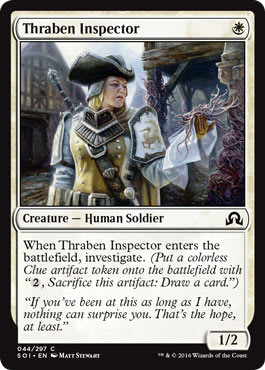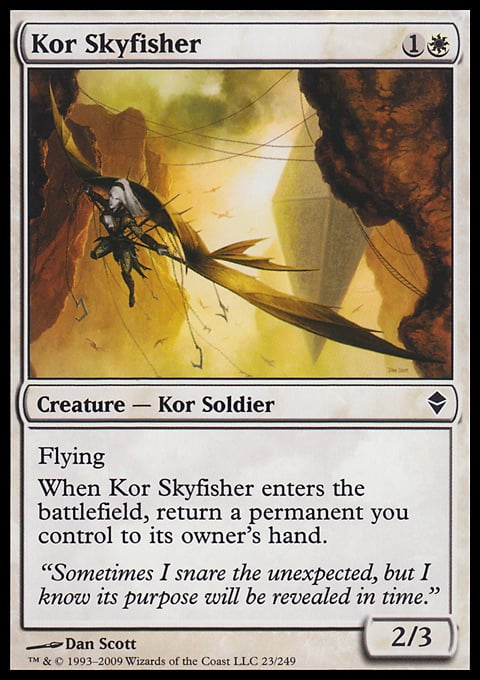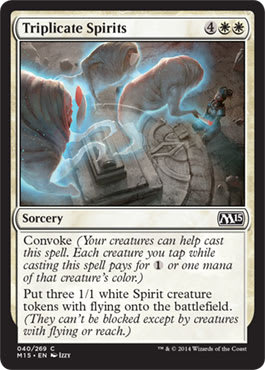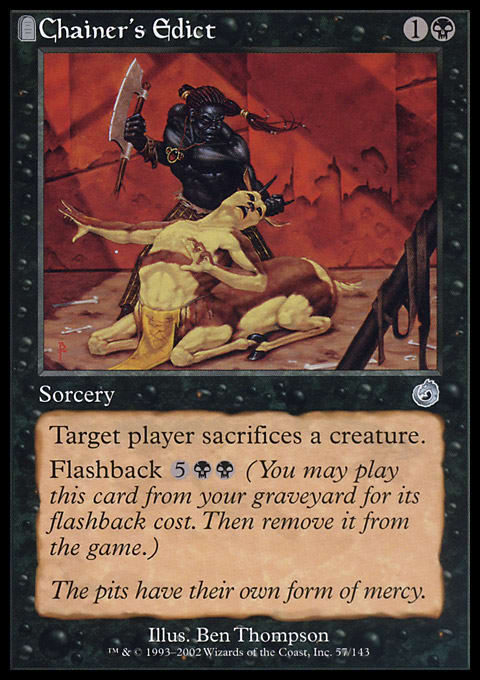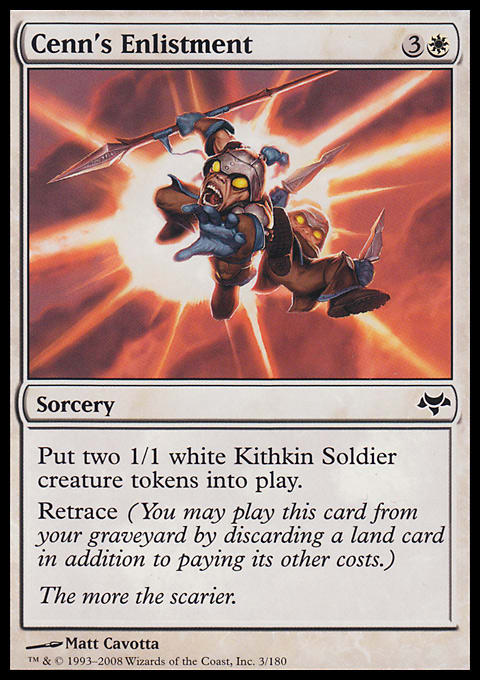Last week, I submitted my article on a Thraben Inspector–fueled Thoughtcast deck before Steve Rubin won Pro Tour Shadows over Innistrad featuring the very same 1-drop in his G/W Tokens deck. I’m doubtful my article would have changed at all, but it sure would have been nice to have a chance to watch Inspector on the highest stage and see if I could glean some wisdom.
G/W Tokens ? Shadows over Innistrad Standard | Steve Rubin, Winner, Pro Tour Shadows over Innistrad
- Creatures (16)
- 4 Sylvan Advocate
- 4 Thraben Inspector
- 4 Hangarback Walker
- 4 Archangel Avacyn
- Planeswalkers (8)
- 4 Gideon, Ally of Zendikar
- 4 Nissa, Voice of Zendikar
- Spells (11)
- 2 Secure the Wastes
- 4 Dromoka's Command
- 1 Evolutionary Leap
- 1 Stasis Snare
- 3 Oath of Nissa
- Lands (25)
- 7 Forest
- 7 Plains
- 3 Westvale Abbey
- 4 Canopy Vista
- 4 Fortified Village
- Sideboard (15)
- 1 Evolutionary Leap
- 1 Secure the Wastes
- 2 Lambholt Pacifist
- 1 Linvala, the Preserver
- 1 Sigarda, Heron's Grace
- 2 Clip Wings
- 3 Declaration in Stone
- 1 Quarantine Field
- 3 Tragic Arrogance
Regardless of my omission by temporal means, the deck I posted generated quite discussion in the Pauper sphere. A number of players opined that adding red for Galvanic Blast aided them in closing out games, and the copies of Great Furnace made meeting metalcraft easier. Other players cut the second color entirely and opted for purely white decks that sought to apply pressure with Auriok Sunchaser and Porcelain Legionnaire. In all instances, the strength of Thraben Inspector was brought up as a key component.
Why is Thraben Inspector so good in Pauper? Despite the presence of cards like Firebolt, Chainer's Edict, and Mulldrifter, it is still a challenge to get a good two-for-one in the common format. Inspector not only replaces itself while adding to the board, it does this on turn one. While Doomed Traveler and Young Wolf both replace themselves, neither does so unassisted. No matter what happens, Inspector is going to give you a card—either it will trade with a Doom Blade and a Natural State or you will crack the Clue.
Inspector is not so far removed from Mulldrifter in this sense. Mulldrifter has two modes, and only one leaves behind a 2/2 flyer. Inspector, on the other hand, has two modes, and each leaves a 1/2 body behind. In a fight, Mulldrifter is going to come out ahead every time due to its natural evasion and 2 points power, but Thraben Inspector is going to cost less.
The cost is a real factor. 1-drops are good in Pauper, but playing too many puts a deck at risk of being blown out by Electrickery or Shrivel. Thraben Inspector circumvents this vulnerability with its second point of toughness. It does not seem like much, but it allows the creature to absorb the first attack Young Wolf and turns on removal. It also survives a single Cuombajj Witches. Thraben Inspector gives white a 1-drop that can compete in the format again.
The Thoughtcast deck I discussed last week placed the emphasis on the artifact nature of Clues but completely ignored another commonly played white card in Kor Skyfisher. Kor Skyfisher, the backbone of many Pauper decks, is a natural companion to Thraben Inspector in both value and beatdown. Kor Skyfisher can either set up Inspector to find another Clue in a grind or it can come down after Inspector at no tempo loss by eating the token.
It is this second element that adds to the attraction of the pairing. Too often these days, Kor Skyfisher is only seen in decks in which it can return a land or a 2-mana artifact (like Prophetic Prism) to delay board development for the sake of a card. These decks completely ignore that Kor Skyfisher is a fantastic beatdown creature on the second turn. Kor Skyfisher used to have a natural home swinging for 2 in Mono-White Aggro, but that deck has fallen by the wayside. Thraben Inspector can help reestablish the deck as a competitor in the current metagame. In order to understand why it is time for white beatdown to come back, we have to look at its history and its downfall.
In the past, the deck centered on powerful 2-drops—Kor Skyfisher and Squadron Hawk. Kor Skyfisher is a great card and matched up well with the format’s threats back in the day. It could trade with Insectile Aberration, block Spire Golem, and eat any 2/2 that Mono-Black Control could muster. Skyfisher could “draw” a land by sending a tapped Plains to the hand to be replayed. The Zendikar standout could also reset a transformed Loyal Cathar or a Safehold Elite with a -1/-1 counter. Both of these scenarios gave the white deck a chance to compete against removal-heavy strategies and fit extra creatures into a deck without taking up an actual card slot.
White decks would start on Icatian Javelineers (to handle Delver), Benevolent Bodyguard (to stop removal), Doomed Traveler (as Edict defense), or Goldmeadow Harrier (as a way to fight singular threats). Squadron Hawk on turn two would provide gas for the next few turns, and finally, the plan would top out on Guardian of the Guildpact or Razor Golem. In all instances, Bonesplitter was a key element allowing these otherwise paltry creatures to trade up and pile on damage. Sunlance, Journey to Nowhere, and Oblivion Ring all helped to clear the path. The deck won by just outlasting removal and opposing creatures. It was the ultimate fair deck.
Fair decks lose to unfair ones. In a world with Affinity, Tron, and Esper Combo, traditional white aggro simply could not compete. While it still were able to fight other decks that operated within the rules of Magic, it could not handle those that could generate an overwhelming mana advantage. Simply put, white aggro wanted to play out two creatures a turn, and against Affinity, Tron, Combo, and Elves, that simply was not enough. So what did white decks do? They tried to play unfair as well.
White decks shifted almost entirely to a token strategy. Raise the Alarm and Battle Screech played extremely well with Guardians' Pledge and Ramosian Rally. Triplicate Spirits provided another army in a can, and Tokens overtook the midrange build as the white deck of choice. It had explosive draws and could run Suture Priest in the main as a way to bolster its own life total while throwing a wrench into the gears of Esper Combo. The token deck could generate unbeatable hands with creatures followed up by an Anthem.
When Cloud of Faeries was banned, the format shifted in such a way that Tokens was no longer a reasonable strategy. The absence of Cloud of Faeries Combo made it easier for other decks to slow down and run answers to a plethora of 1-toughness creatures. Veteran Armorer and Lumithread Field could do work against Electrickery, but eventually, Tokens ran into the same problem as white aggro—decks that were more mana-efficient. Affinity and Tron were early winners in the world after Cloud of Faeries, and both those decks could present large threats quickly and run Electrickery.
These are the same decks that gave the other Plains deck fits. What changed? Affinity and Tron were the big winners early, but at the end of Oath of the Gatewatch season, Stompy and Delver were the two most popular undefeated decks, and Kor Skyfisher white decks historically matched up well against those strategies. The paucity of other white decks made Sunlance an attractive removal spell, and Journey to Nowhere is always a good card. And let’s be real for a second: I really wanted to play Thraben Inspector into Kor Skyfisher. With all that in mind, here is a deck I ran in the Pauper League to a 4–1 finish:
Mono-White Aggro ? Pauper | Alex Ullman, 4?1 in the Pauper League
- Creatures (28)
- 2 Hopeful Eidolon
- 2 Leonin Skyhunter
- 4 Icatian Javelineers
- 4 Kor Skyfisher
- 4 Loyal Cathar
- 4 Squadron Hawk
- 4 Thraben Inspector
- 4 Razor Golem
- Spells (11)
- 4 Sunlance
- 4 Journey to Nowhere
- 3 Bonesplitter
- Lands (21)
- 20 Plains
- 1 Secluded Steppe
- Sideboard (15)
- 3 Standard Bearer
- 2 Celestial Flare
- 2 Prismatic Strands
- 2 Kor Sanctifiers
- 2 Obsidian Acolyte
- 2 Last Breath
- 1 Divine Offering
- 1 Unmake
Playing this deck taught me a lot about the current state of the format. My experience reinforced the value of turn one. Delver of Secrets, Young Wolf, Slippery Bogle, and Goblin Cohort are all high-impact plays that happen on the first turn. Mono-White Aggro has relied on Icatian Javelineers and Doomed Traveler in the past, but Thraben Inspector is on another level. Hitting it on the first turn provides a body that matches up well with other early threats and, as mentioned earlier, gives us a card down the road.
Mono-White attacks Pauper by lining up favorably against the removal. Currently, Pauper removal is very good at holding down a large number of small threats or a few large beaters. Going moderately wide with slightly larger creatures exploits holes in defenses. Chainer's Edict does not pack the same punch against 1-drops, while Firebolt needs both halves to take out a Loyal Cathar, Kor Skyfisher, or Razor Golem.
Pauper is ill-equipped for combat over multiple turns. Rather, creatures are selected either because of their abilities (like Mulldrifter or Fangren Marauder) or their offensive prowess (Delver of Secrets). While the creatures in this deck are also good at beating down, they also block well. Vigilance is an underrated ability, but Golem and Cathar are able to apply pressure while not putting the shields down. Mono-White Aggro is the deck best suited to get into the scrum of the red zone.
The last lesson I learned was the value of creature buffs. Bonesplitter is great, as it changes the clock. Combined with vigilant creatures, it makes the crack back far more difficult for your adversary. A card that always impressed me when it showed up was Hopeful Eidolon. Pauper is largely a format of 2/2 creatures, and the ability to turn Thraben Inspector into an Armored Warhorse can be a huge advantage. A Kor Skyfisher wearing the Eidolon can wreak havoc on other Kor Skyfisher decks.
Playing the deck showed me that a large number of decks rely on their opening sevens. I felt advantaged in the protracted games provided I could develop my board. In games and matches I lost, my opponents all had very strong opening hands. When they took mulligans, it was often a struggle for them to catch back up. Mono-White Aggro is redundant in composition and can mulligan fairly easily since so many cards are interchangeable. Whereas other decks need to spend spells to undo mulligans, this deck can do so with permanents—Squadron Hawk finds more cards; Kor Skyfisher resets land drops; Thraben Inspector draws a card—which takes the sting out of going to six.
So where does that leave me? Over four league runs with various versions of the deck to date, I am 16–4, going 4–1 in each of them. For the last two, I have run this list:
Mono-White Aggro ? Pauper | Alex Ullman, 4?1 in the Pauper League
- Creatures (27)
- 1 Hopeful Eidolon
- 2 Aven Riftwatcher
- 4 Icatian Javelineers
- 4 Kor Skyfisher
- 4 Loyal Cathar
- 4 Squadron Hawk
- 4 Thraben Inspector
- 4 Razor Golem
- Spells (12)
- 1 Angelic Purge
- 1 Cenn's Enlistment
- 3 Sunlance
- 4 Journey to Nowhere
- 3 Bonesplitter
- Lands (21)
- 20 Plains
- 1 Secluded Steppe
- Sideboard (15)
- 3 Standard Bearer
- 2 Celestial Flare
- 2 Prismatic Strands
- 2 Kor Sanctifiers
- 2 Obsidian Acolyte
- 1 Sunlance
- 1 Hopeful Eidolon
- 1 Divine Offering
- 1 Unmake
On the Removal
Sunlance is great but loses its luster as the game goes on. I was never siding in the Last Breath, so I moved the last copy of the white Bolt to the side. Journey to Nowhere can answer just about anything. Kor Skyfisher lets you expend a Journey early only to rebuy it later for something that has a greater impact. Angelic Purge is a catchall for the main deck, as it can hit creatures, artifacts, or enchantments. Why this over Oblivion Ring? The decks against which you really want to take out a key permanent often pack Capsize, and Purge conveniently gets around bounce. Celestial Flare and Unmake in the sideboard help to skew the removal against larger creatures and singular attackers.
On Aven Riftwatcher
I initially ran Leonin Skyhunter as a 2-drop that did work against Delver. While it worked, I wanted something that could help pad my life total against more aggressive strategies. Aven Riftwatcher fit the bill. While it has an expiration date, the 3 toughness does a great job of absorbing blows. Pairing it with Kor Skyfisher is a tried and true method to coming back against beatdown. As the aggressor, Riftwatcher is an 8-point life swing, doing a great impersonation of a Gray Merchant of Asphodel.
On Cenn's Enlistment
Mono-White wants to hit land drops on the first four turns. After hitting the sixth land, we start to enter flood territory. Enter Cenn's Enlistment. Retrace allows you to trade excess lands into extra bodies—bodies that are significantly better thanks to Bonesplitter. They may die to everything, but the Kithkin keep coming and can make mounting an assault in the late game a nightmare.
So where does Mono-White go from here? I’m not sure. Flayer Husk may earn a slot one day. Dauntless Cathar is intriguing as well. Battle Screech is a great card, but without Anthems, it lacks the same potential. As long as Delver, Stompy, and Mono-Black Control stick around the top tables, Mono-White should be there to wield the axe and put them in their place.
















